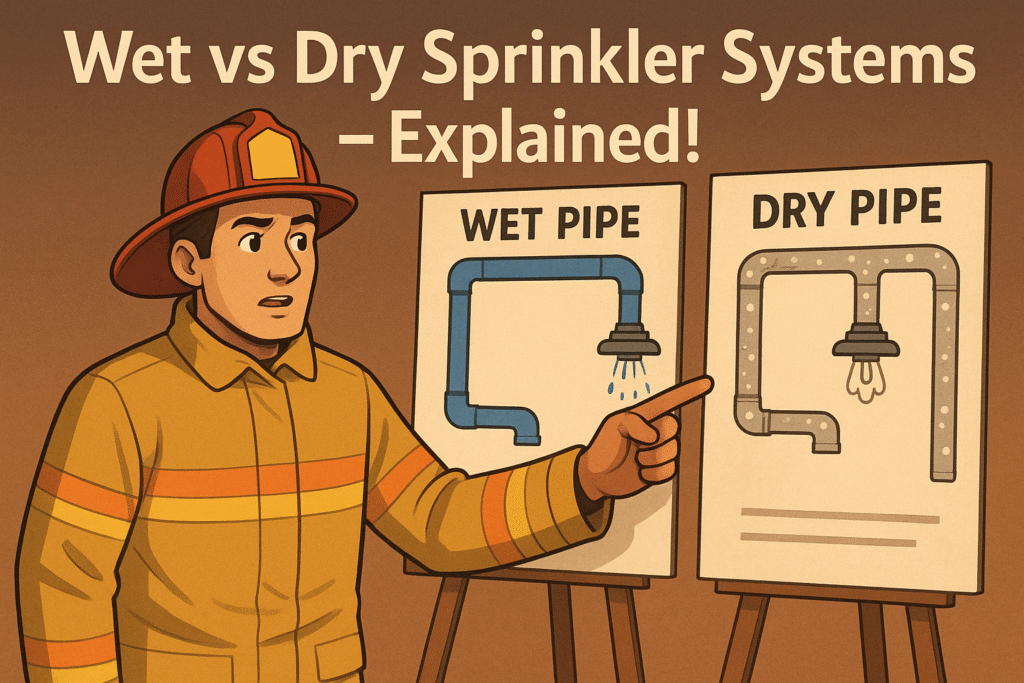Learn the difference between Wet vs Dry Pipe Sprinkler Systems based on NFPA 13! Find out where to use each system with simple, engaging explanations.


Learn the difference between Wet vs Dry Pipe Sprinkler Systems based on NFPA 13! Find out where to use each system with simple, engaging explanations.